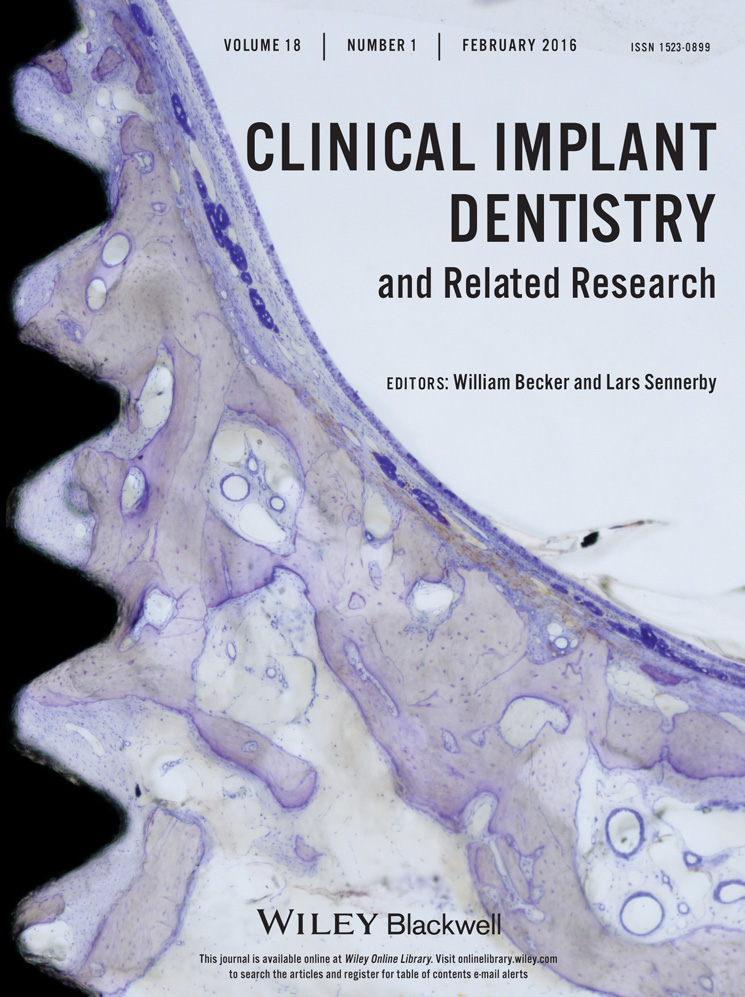Influence of the Periodontal Status on the Initial-Biofilm Formation on Titanium Surfaces
Abstract
Background
Dental implants will be exposed to a complex ecosystem once they are placed in the oral cavity. The bacterial colonization and biofilm formation on these devices will depend not only on the physicochemical surface implant properties but also on the periodontal health conditions of the patients, as these devices are exposed.
Purpose
The aim of this study was to correlate the subgingival microbial profile with the composition of initial biofilm formed on different microstructured titanium (Ti) surfaces.
Materials and Methods
Ten periodontitis and 10 periodontally healthy subjects were included in this study. The subjects wore a removable acrylic device with four different fixed Ti surfaces for 48 hours. Microbial samples of subgingival plaque and the biofilm formed on each Ti surface were individually analyzed by the checkerboard DNA-DNA hybridization technique.
Results
Despite the roughness or hydrophilicity of the Ti surfaces, a characteristic pattern of bacterial adhesion was observed on each of the study groups. However, significant differences in the proportion of the species that colonized the Ti surfaces were found between the periodontitis and periodontally healthy groups. Treponema denticola, Neisseria mucosa, Eikenella corrodens, and Tannerella forsythia were detected in higher proportions on the Ti disks placed in the periodontitis subjects, while significant higher proportions of Capnocytophaga sputigena, Fusobacterium periodonticum, Prevotella melaninogenica, and Streptococcus mitis were detected on the Ti disks placed in the periodontally healthy group.
Conclusions
The results obtained in this study shows that the composition and the proportion of the species that initially colonize Ti surfaces are highly influenced by the periodontal status more than the surface characteristics of the Ti implant.




